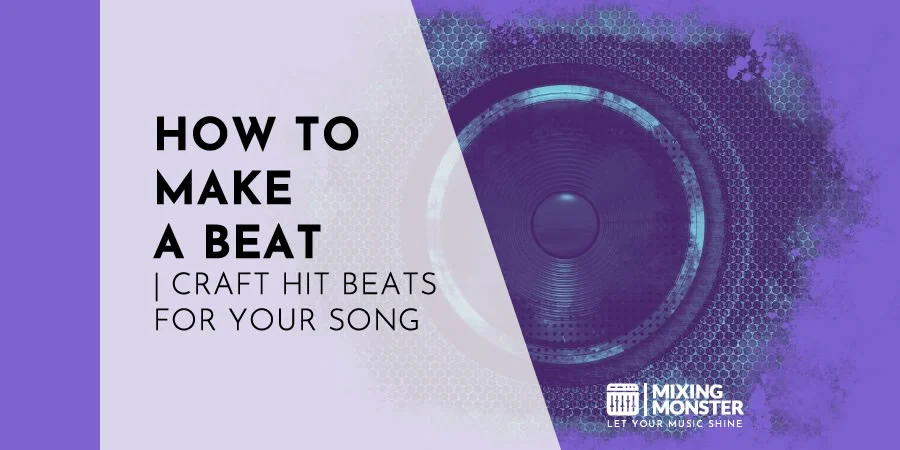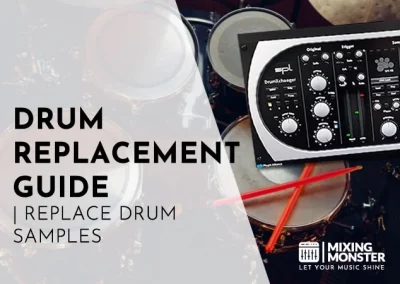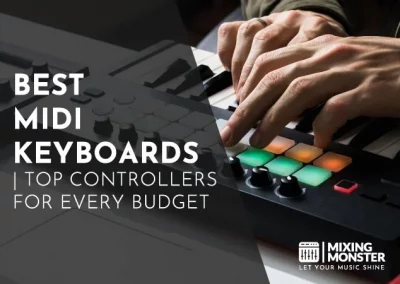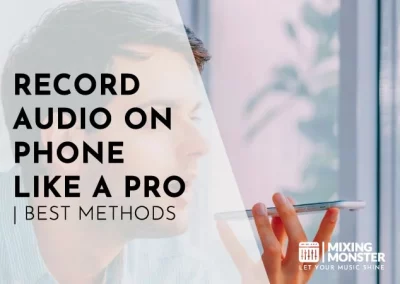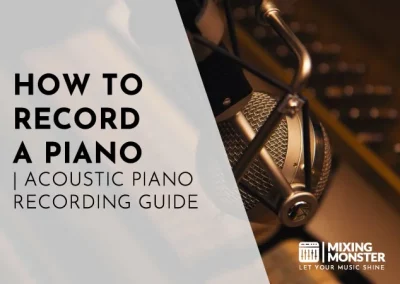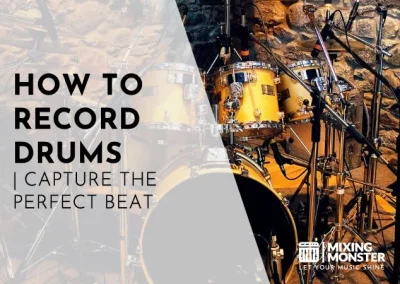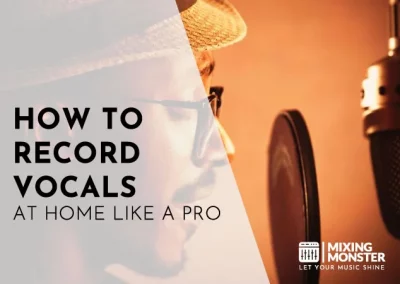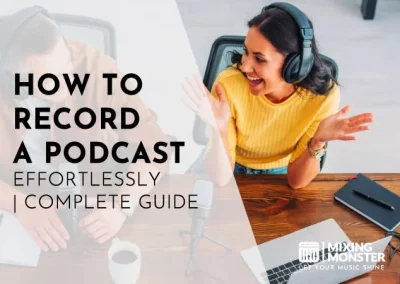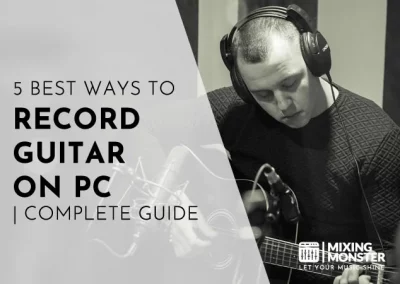Disclosure: Some of the links below are affiliate links, meaning that at no additional cost to you, we will receive a commission if you click through and make a purchase. Read our full affiliate disclosure here.
Creating a beat is an essential skill for music producers and hobbyists alike. It forms the backbone of songs across a multitude of genres. From hip-hop to EDM, the beat is the rhythmic glue that holds a track together, driving it forward and providing the foundation upon which melodies and harmonies are built. Whether you’re a beginner looking to step into the world of music production or an experienced artist refining your craft, understanding how to make a beat is crucial.
Making a beat involves a creative process wherein a producer composes a rhythmic track that serves as the backbone for a piece of music. The process begins with establishing a tempo and a groove, often starting with the drums, which set the foundational rhythm. Producers then typically add a bass line that complements the drum pattern, followed by melodic elements such as chords, leads, and samples to create an entire arrangement.
With the help of digital audio workstations (DAWs) and beat-making software, beat creation has become more accessible than ever. These tools offer a platform to experiment with different sounds, patterns, and textures, making it possible to produce professional-quality beats right from your home studio. Learning to navigate through these programs while harnessing a good ear for rhythm and timing will elevate your beat-making skills.
KEY TAKEAWAYS:
- Creating beats is a fundamental skill for modern music production.
- Digital tools and software make beat-making approachable for all skill levels.
- Proficiency in rhythm and software functionality improves beat-making prowess.
Table Of Contents
1. Basics Of How To Make A Beat For Your Song
2. Beat-Making Software And DAWs
3. How To Make Your Beat
4. Beat-Making Sampling And Sound Design
5. Editing And Mixing A Beat
6. FAQ

1. Basics Of How To Make A Beat For Your Song
Before diving into beat-making, ensuring you have the right equipment and understand how it all works together to create a cohesive sound is crucial. Here’s how to lay the proper foundation for your music production setup.
Choosing The Right Computer
Your computer is the central hub of your music production setup. It would be best to have a machine that can handle a Digital Audio Workstation (DAW), the software for recording, editing, and producing audio files. Look for computers with substantial processing power, RAM (ideally 8GB or more), and solid-state drive storage, as DAWs are resource-intensive.
Selecting A MIDI Controller
A MIDI controller is a device that helps you input musical notes and control your DAW. While not required, they are handy for beat-making. There are various types available, from keyboard-style controllers to pad-based ones. Your choice should align with your comfort and the style of music you intend to produce.
Understanding Audio Interfaces
An audio interface is essential for quality sound recording and playback. It converts microphone and instrument signals into a format your DAW can use. Interfaces come in various input/output configurations, so consider how many instruments and microphones you plan to record simultaneously.
Monitoring With Headphones And Monitors
Good monitoring is a must for accurately assessing and editing your beats. High-quality studio monitors provide a flat frequency response for an uncolored sound, while studio headphones offer an intimate monitoring experience essential for detailed editing and mixing. Balancing both can yield the best results in the final mix.
2. Beat-Making Software And DAWs
Selecting the correct Digital Audio Workstation (DAW) and understanding its ecosystem of virtual instruments and plugins is critical. These tools are the foundation of your beat-making process, where creativity meets technology.
Navigating Your DAW
Your DAW functions as the central hub for all your music production activities. Mastering its layout and operation is vital to crafting beats efficiently.
Major DAWs like Pro Tools, Ableton Live, FL Studio, Logic Pro, and Studio One offer comprehensive and intuitive interfaces.
GarageBand is a great starting point for beginners, especially if you’re on a Mac, while online solutions like Soundtrap and Soundation can be accessed from anywhere with internet connectivity.
Exploring Virtual Instruments For Beat-Making
Virtual instruments are essential for adding musical elements to your beats. Most DAWs come with a variety of built-in instruments.
Ableton and FL Studio, for example, offer extensive libraries of synths, drums, and samplers. You can expand your palette by integrating additional virtual instruments that mimic classic hardware or bring entirely new sounds to your production.
Plugins And Audio Effects For Beat-Making
Audio plugins and effects are the nuances that refine your beat’s identity. Use compression, equalization (EQ), and reverb to shape the dynamics and space of your beat.
The market is vast, but look for compatibility with your DAW of choice, be it Ableton, Pro Tools, or lesser-known DAWs like Soundtrap. These plugins can transform a basic loop into a polished piece of music.
3. How To Make Your Beat
Crafting a compelling beat is an art that hinges on a blend of creativity and technical skill. This section will focus on the fundamental building blocks of beat-making:
- Laying down a solid drum pattern
- Weaving in a dynamic bass line
- Enriching the composition with melodies and harmonies
Starting With A Drum Pattern
- Choose Your Drum Sounds:
Select a kick, snare, hi-hat, and any other percussion sounds you want to include. - Create A Basic Loop:
Use a sequencer or MIDI editor to arrange these sounds into a one-—to four-bar loop that serves as the backbone of your beat.
Incorporating Bass Lines
- Select A Bass Sound:
Choose a bass that complements your drum pattern, whether a deep synth bass or a sampled acoustic bass. - Write Your Bass Line:
Using MIDI, craft a bass line that follows the rhythm of your drum pattern and adds groove to your beat.
Adding Melodies And Harmonies To Your Beat
- Choose Your Instruments:
Pick the sounds for your melody, whether a piano, strings or a synth. - Compose The Melody:
With your chosen instrument, create a melody that enhances the emotion and energy of your beat. Consider incorporating loops and MIDI to experiment and refine your melody. - Add Harmonies:
Layer additional harmonies to give depth to your beat, ensuring they complement the main melody and don’t overcrowd the mix.
4. Beat-Making Sampling And Sound Design
In this section, you’ll explore the art of using samples and sound design techniques to create compelling beats. These skills are essential for bringing originality and quality to your music production.
Working With Beat Samples
When working with beat samples, having a well-organized sound library is essential. Services like Splice Sounds offer vast samples across genres, ready to be sequenced into your beat. Remember to:
- Choose samples that complement each other tonally.
- Be mindful of sample clearance if you plan to release your music commercially.
Creative Sound Selection For Beat-Making
Creative sound selection is at the heart of beat-making. It involves more than just choosing the right kick or snare; it’s about finding unique sounds that give your beat character. To add interest:
- Layer different sounds to create complexity.
- Experiment with unconventional sources, such as field recordings, to differentiate your beats from the mainstream.
Synthesizers And Samplers For Beat-Making
Modern synthesizers and samplers are powerful tools for sound design. They can mimic traditional instruments or generate entirely new sounds. Use them to:
- Create original sounds to define your beats.
- Utilize built-in sequencing features to sketch out ideas quickly.
Mastering these techniques ensures your beats are fresh, dynamic, and uniquely yours.

5. Editing And Mixing A Beat
In this section, you’ll learn to refine and enhance your beats through precise editing and mixing techniques, which are crucial for producing professional-sounding music.
Automation And Editing Techniques
Automation plays a vital role in bringing life to your beat. Use automation to dynamically control various parameters over time within your Digital Audio Workstation (DAW). For example, you might automate the volume to create fades or the panning to move sounds across the stereo field manually.
When it comes to editing, consider slicing and time-stretching to align beat elements perfectly or to alter their rhythmic patterns creatively. Also, pay attention to pitch correction tools to ensure melodic elements align with your track.
Beat Mixing Fundamentals
Effective mixing begins with balancing levels; your kick drum, snare, hi-hats, and melodic elements need to coexist without any one component overpowering the others. Panning to assign a spatial location for each sound creates a wider stereo image.
Implement EQ (equalization) to sculpt the frequency response, ensuring each sound occupies its unique spectral space. Integrate audio effects such as reverb for depth, delay for texture, and compression to even out dynamic range and add punch.
Regularly reference your mix on various sound systems to confirm consistency and quality across different playback scenarios.
Key Takeaways For Beat-Making
- Start by choosing a tempo that matches the energy you want for your song. Faster tempos often yield energetic beats, while slower tempos can give a laid-back feel.
- Layer your beats to create a rich, textured sound. Begin with a basic pattern and add complexity with additional percussion elements.
- Ensure that your kick and snare drums are well-balanced; they are the core of your beat.
- Use syncopation to add interest and a unique groove to your beat, making it more memorable.
- Experiment with sampling to bring a distinctive flair to your music. Textural sounds or vocal chops can set your beat apart.
- To ensure a professional final product, keep your sounds high-quality. This means using well-recorded samples or synthesizing your sounds effectively.
- Continually refine and adjust your beat as you go. Often, the best beats come from iteration and small, impactful changes.
Happy beat-making!
6. FAQ
1) What equipment do I need to start making beats?
To begin making beats, you need a computer or a smartphone, beat-making software or an app, and headphones or speakers. Additional equipment could include a MIDI keyboard or controller for more tactile input.
2) What are the basic steps to creating a beat from scratch?
Creating a beat typically starts with setting your session’s BPM to match the tempo of your idea. Then, you make a drum pattern, lay down the bass line, construct chord progressions, add melodies, and adjust effects to refine your beat.
3) Can I create a beat using only my phone, and if so, how?
You can create a beat using only your phone by downloading a beat-making app. Start by choosing the right app for your needs, then use the app’s built-in instruments, samples, and loops to assemble your beat.
4) What are some tips for beginners to make their beats?
Beginners should focus on mastering basics like tempo, rhythm, and structure. Good practices include starting with a simple drum pattern, experimenting with samples instead of playing live instruments, and not overcomplicating beats early on.
5) How can I make a beat online without any previous experience?
Online platforms and software like Soundtrap provide step-by-step guides and intuitive user interfaces for beginners. This enables you to start making beats immediately, often with drag-and-drop features that don’t require previous experience.
6) How does the choice of instruments affect the creation of a beat?
The choice of instruments can significantly affect a beat’s texture, mood, and genre. Punchy electronic drums can steer you toward hip-hop, while soft, acoustic sounds might be better suited to lo-fi or ambient tracks.

